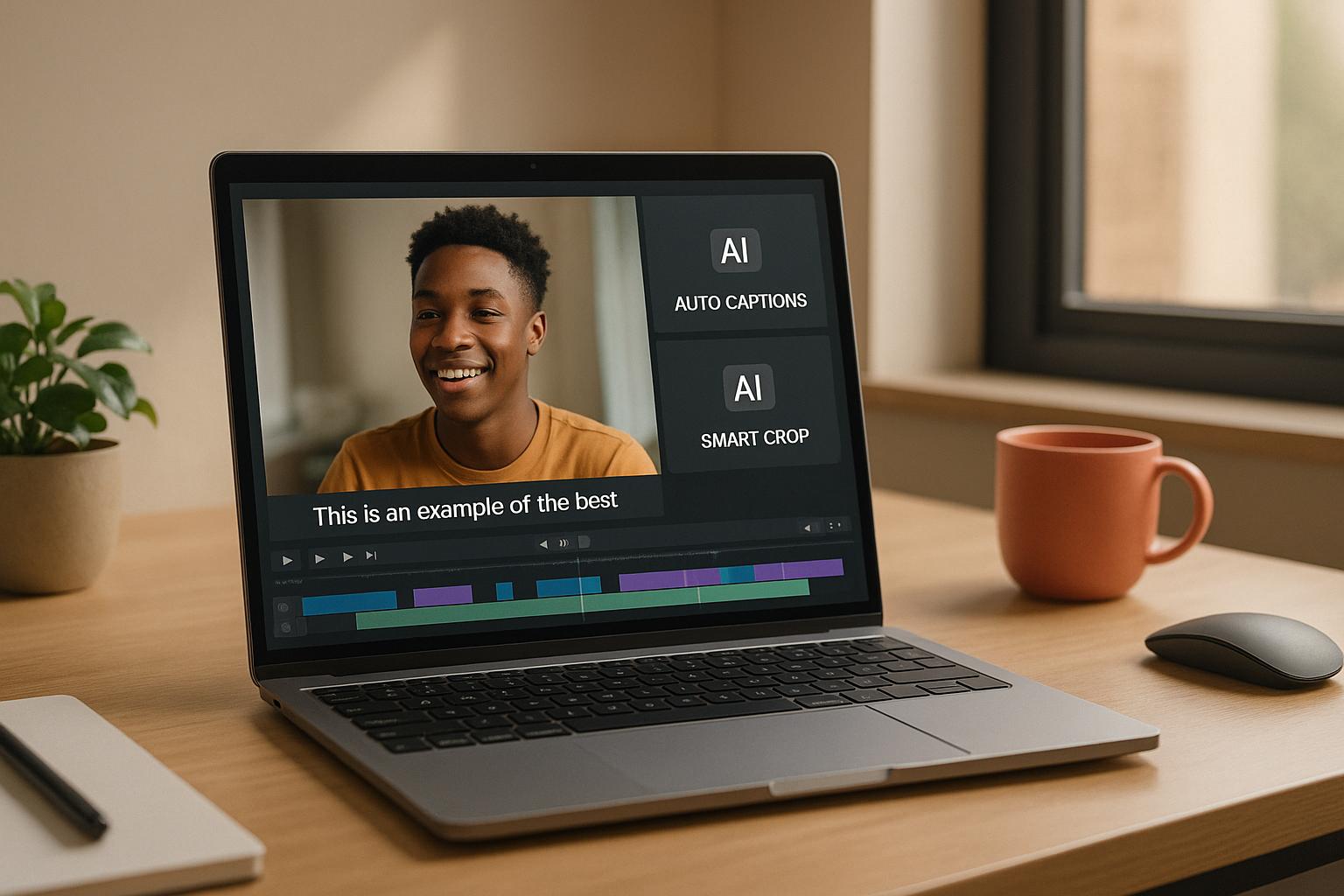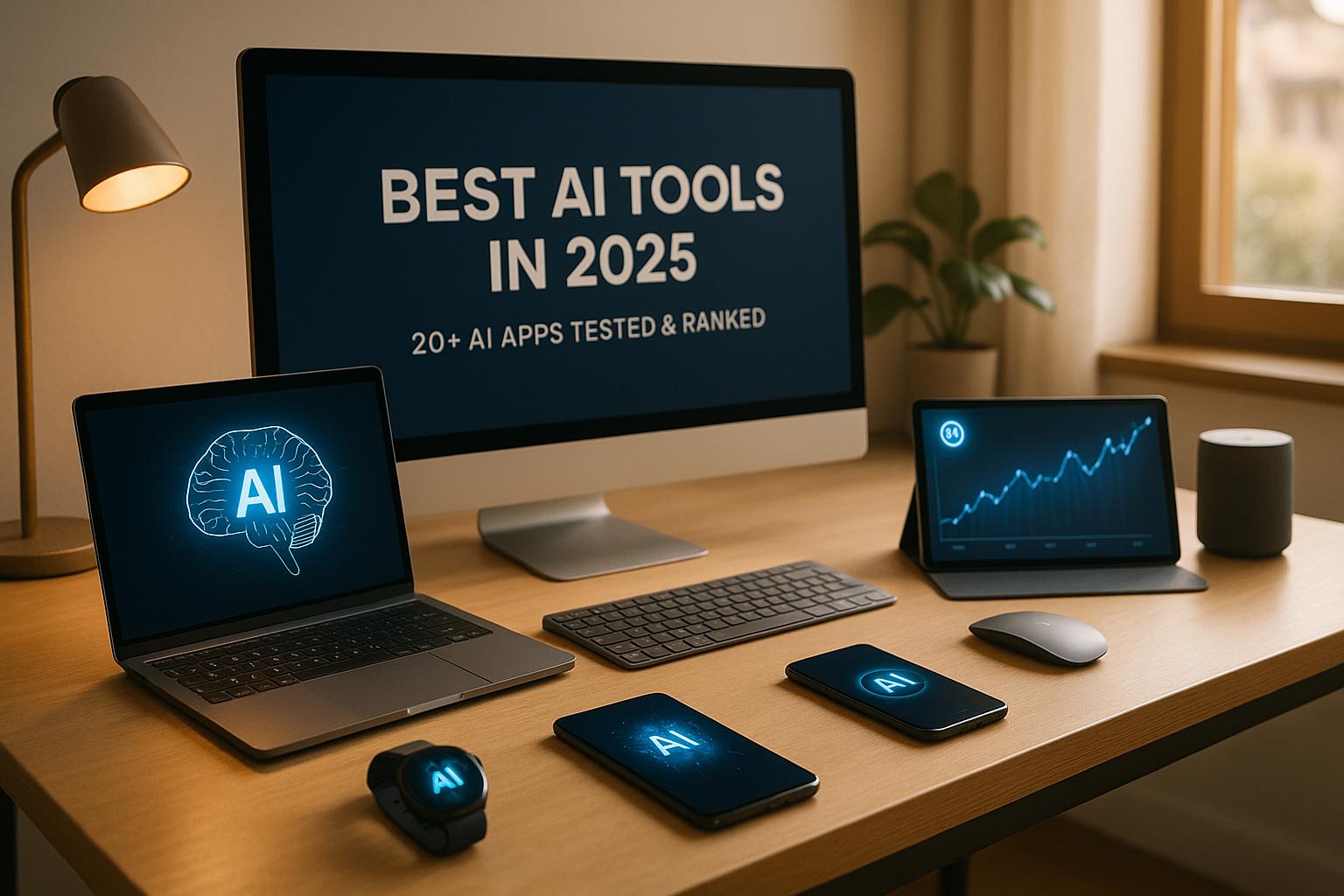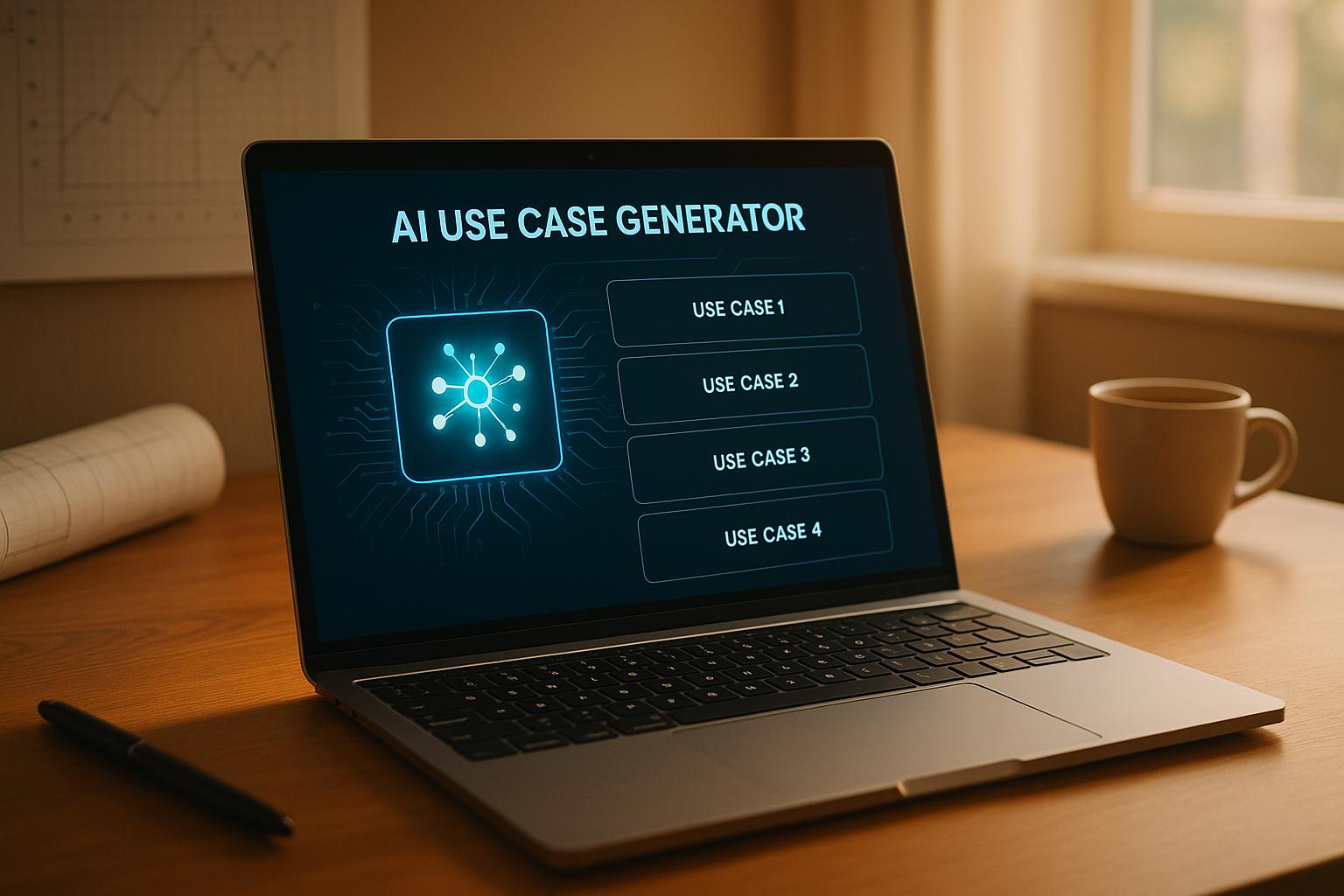AI chatbots are reshaping healthcare by improving efficiency, cutting costs, and enhancing patient care. Here are five key ways AI chatbots are transforming healthcare through data analysis:
- Patient Monitoring: AI tracks real-time health data from wearables and sensors, helping prevent issues like hospitalizations by identifying early warning signs.
- Clinical Trials: Automates patient screening, data collection, and adverse event reporting, cutting trial costs by up to 70% and timelines by 80%.
- Medical Imaging: Enhances diagnostic accuracy for X-rays, CT scans, and MRIs, reducing errors and speeding up analysis.
- Patient Feedback: Analyzes reviews to identify trends, improve care strategies, and address concerns while saving time for healthcare providers.
- Resource Management: Optimizes staff scheduling, equipment maintenance, and administrative processes, saving millions annually for hospitals.
By 2025, the global healthcare chatbot market is projected to reach $1.49 billion, with U.S. healthcare facilities reporting up to a 40% improvement in operational efficiency. These tools are not replacing doctors but supporting them to deliver smarter, data-driven care.
| Use Case | Key Benefits |
|---|---|
| Patient Monitoring | Early intervention, 97% care plan adherence |
| Clinical Trials | Faster processes, reduced costs |
| Medical Imaging | Improved diagnostic accuracy, faster image analysis |
| Patient Feedback | Real-time insights, tailored responses |
| Resource Management | Cost savings, optimized operations |
AI chatbots are driving healthcare innovation, improving patient outcomes, and saving billions globally.
Big Data, AI , and ChatGPT in Healthcare
1. Patient Monitoring and Alert Systems
AI chatbots are transforming how we monitor patients by using advanced alert systems that process real-time health data. These systems gather and analyze information from various sources - like wearables, sensors, and patient-reported inputs - to keep a close eye on vital signs and catch potential health problems before they escalate.
Healthcare facilities using these AI-driven monitoring tools have seen impressive results. Patients show over 90% engagement with these systems, and adherence to prescribed care plans reaches an incredible 97%. The secret lies in how these systems continuously process diverse data streams, such as:
| Data Source | Metrics Monitored | Alert Triggers |
|---|---|---|
| Wearable Devices | Heart rate, blood pressure, oxygen levels | Irregular patterns, sudden changes |
| Patient Input | Symptoms, medication adherence, diet | Missed medications, concerning symptoms |
| Ambient Sensors | Sleep patterns, activity levels, stress markers | Behavioral changes, reduced mobility |
| Medical Devices | Blood glucose, respiratory rate, temperature | Out-of-range readings, trending decline |
These capabilities are especially valuable in managing chronic conditions. For example, consider a patient with chronic obstructive pulmonary disease (COPD) using an AI-enabled remote pulse oximeter. The system monitored oxygen levels and lung function, identifying patterns that suggested a higher risk of exacerbation. Thanks to this early warning, healthcare providers could adjust the patient’s medication, preventing severe respiratory episodes and avoiding hospitalization.
AI’s role isn’t limited to physical health monitoring - it’s also making strides in mental health. Modern systems analyze lifestyle data to identify mental health indicators, spotting signs of stress and anxiety through markers such as:
- Changes in heart rate variability
- Disrupted sleep patterns
- Reduced activity levels
- Shifts in behavioral patterns
For diabetes management, AI systems track blood glucose, physical activity, and dietary habits to create tailored meal and exercise plans. These personalized recommendations help improve glycemic control and contribute to better overall health outcomes. This approach not only benefits patients but also streamlines healthcare operations.
2. Clinical Trial Data Processing
AI chatbots are reshaping how clinical trials handle data, slashing costs by up to 70% and cutting timelines by as much as 80%. These advancements significantly improve both patient screening processes and the reliability of trial data.
For example, tools like the Automated Clinical Trial Eligibility Screener (ACTES) streamline patient screening, reducing the time required by 34% and boosting enrollment rates by 11.1%.
| Data Processing Area | AI Chatbot Capabilities | Impact on Trial Efficiency |
|---|---|---|
| Patient Screening | Automated eligibility assessment | 34% faster screening time |
| Data Collection | Real-time symptom monitoring | 60% reduction in query response time |
| Treatment Analysis | Pattern recognition and correlation | Up to 80% shorter trial timelines |
| Adverse Events | Automated detection and reporting | 170ms average response time |
One standout example comes from Bayer's pharmaceuticals division, which developed a centralized adverse event detection engine. This system uses APIs to process data rapidly, providing instant feedback during trials.
"By automating the processes of data collection and management, chatbots improve the precision and uniformity of patient-reported outcomes, thus minimizing human error and reducing operational expenses." - BioPharmaTrend
The FDA has also acknowledged the role of AI in clinical trials. In its October 31, 2024, guidelines, FDA Associate Director Tala Fakhouri highlighted AI's growing importance:
"We're actually very excited about AI use. I think we're seeing that it's increasing efficiencies in different parts of the drug development process... It can also fill in certain gaps for rare diseases where we can see a lot of potential use for AI to accelerate the development of drugs."
On the practical side, Apollo 24|7's WhatsApp-based chatbot, powered by Infobip’s platform, showcases how AI can streamline data processing. Its Symptom Checker tool allows researchers to adapt study protocols based on real-time participant feedback.
The financial impact of AI in pharmaceutical research is expected to be massive, with estimates ranging from $350 billion to $410 billion annually by 2025. AI chatbots contribute to these savings and improved outcomes by:
- Handling large volumes of patient-reported data
- Detecting intricate data patterns
- Maintaining regulatory compliance
- Reducing data entry mistakes
- Supporting continuous trial monitoring
To ensure data security, pharmaceutical companies adhere to GDPR and HIPAA regulations. These safeguards, combined with AI's analytical power, are revolutionizing how clinical trials are conducted and analyzed.
3. Medical Image Analysis Support
AI chatbots are transforming medical imaging by improving diagnostic accuracy and speeding up image analysis. According to the American Hospital Association, nearly 400 FDA-approved AI algorithms are now being used in radiology, showcasing the growing role of AI in healthcare. These advancements in image analysis are part of AI's broader contributions to healthcare, including data interpretation and clinical decision-making.
AI systems handle a variety of imaging formats, each with specific capabilities and clinical benefits:
| Image Type | Capabilities | Clinical Impact |
|---|---|---|
| X-rays | Identifies patterns, detects anomalies | Boosts diagnostic accuracy for conditions like pneumonia |
| CT Scans | Differentiates tissues, assesses mortality risks | Helps predict long-term outcomes |
| MRIs | Segments organs, classifies tissues | Improves tissue analysis |
| Mammograms | Detects cancer, reduces false positives | Cuts false positives by 30% |
For example, Massachusetts General Hospital implemented an AI-based mammography screening system that maintained high sensitivity for breast cancer detection while reducing false positives by 30%. This demonstrates how AI tools can assist medical staff without replacing their expertise.
"AI tools are enhancing medical imaging by identifying subtle patterns and anomalies, giving staff an extra layer of support without taking over the diagnostic process."
– Dev Nag, CEO/Founder of QueryPal
The adoption of AI in radiology is growing rapidly. Over 52% of radiologists now use AI, leveraging its ability to process data quickly, detect anomalies with precision, identify diseases early, and automate tasks like image segmentation.
Research from Stanford University further highlights the potential of AI. Their system outperformed human radiologists in detecting pneumonia from chest X-rays. Similarly, Mount Sinai Hospital developed a deep learning model capable of predicting long-term mortality risks from chest CT scans, allowing for more informed treatment decisions.
AI's capabilities extend beyond image analysis. By integrating with electronic health records (EHRs), AI systems can combine imaging data with medical histories and genetic information to create detailed patient profiles. This integration supports precision medicine and enables more tailored treatment plans.
In cancer care, AI is revolutionizing treatment planning. For instance, it can reduce radiotherapy preparation time by up to 90%, giving healthcare providers more time to focus on patient care. Despite these advancements, human oversight remains crucial to ensure the best outcomes for patients.
sbb-itb-212c9ea
4. Patient Feedback Analysis
AI chatbots are reshaping how healthcare providers analyze patient feedback, delivering insights into satisfaction levels and pinpointing areas for improvement. In fact, the healthcare chatbot market, valued at $787 million in 2022, is projected to grow to $1.49 billion by 2025.
Healthcare organizations have reported high levels of patient engagement and adherence, generating a wealth of data that can drive continuous improvements.
"With a continuous influx of patient reviews every month, AI assists us in predicting their satisfaction levels. Instead of manually sifting through numerous reviews, AI enables us to generate concise summaries that offer a comprehensive overview of the collective sentiments. This analytical approach is invaluable in looking at areas where improvements are needed."
- Dr. Lea McMahon, Chief Clinical Officer at Symetria Recovery
These AI-driven insights help providers address patient concerns more effectively and fine-tune care strategies. Building on earlier advancements in patient monitoring and clinical trials, AI's role in feedback analysis offers several standout benefits:
| Capability | Impact | Benefit to Healthcare Providers |
|---|---|---|
| Sentiment Analysis | Detects the emotional tone of feedback | Helps craft responses tailored to patient needs |
| Pattern Recognition | Spots recurring issues and trends | Supports proactive solutions |
| Real-time Processing | Delivers instant feedback analysis | Enables quicker responses to urgent concerns |
| Data Integration | Merges feedback with other patient data | Provides a holistic view of patient experiences |
For healthcare providers grappling with staffing shortages, AI offers a lifeline. As Carlos Da Silva, a Physician Assistant at PA Career Hub, explains:
"Many healthcare organizations right now are still operating at relatively low staff levels, and their team doesn't have much extra time to spare in their average shift. Fortunately, this kind of information review and data analysis is exactly the kind of work that AI programs can seamlessly step into."
The time saved is significant, as AI streamlines operations while bolstering data security. Features like multifactor authentication block 99.99% of cybersecurity threats.
"We're leveraging machine learning to categorize and prioritize patient feedback more efficiently. This classification not only saves time but also helps us identify and focus on the areas that need immediate attention."
- Dr. Scott Katzman, Orthopedic Surgeon at NJ Spine & Orthopedic
Protecting patient trust is critical, and healthcare providers are implementing strong privacy measures to secure data during feedback analysis. These include encryption, data minimization, and clear opt-in processes for data collection. With healthcare cyberattack recovery costs averaging $10.1 million, such precautions are vital to safeguarding both patient information and organizational resources.
AI systems are also evolving to process feedback from multiple channels while adhering to HIPAA regulations. This ensures healthcare providers can extract meaningful insights without compromising patient privacy.
For those ready to explore cutting-edge AI tools, a curated selection is available at AI Apps.
5. Healthcare Resource Management
AI chatbots are reshaping healthcare by cutting costs and streamlining operations. For example, the Cleveland Clinic leveraged AI to uncover inefficiencies in patient flow and resource allocation, resulting in annual savings of $60 million.
These cost savings come from targeted improvements in key areas:
| Area | Impact | Real-World Results |
|---|---|---|
| Staff Scheduling | Aligns staffing levels with patient demand | St. Luke's Network achieved a 40% reduction in wait times and cut operational costs by 25% |
| Equipment Monitoring | Predicts maintenance needs and tracks usage | Texas hospitals improved preventive maintenance with predictive analytics |
| Administrative Tasks | Automates routine processes | Boosted operational efficiency by up to 40% |
"AI is as good as the data structure on which it is built. It can reliably pull numbers from disparate facility systems and present them together, but it cannot detect if a number is incorrect."
- JD Duigou, Chief Information Officer, Medxcel
Healthcare facilities are increasingly adopting AI chatbots to manage resources more effectively. At Duke Specialty Infusion Center, AI-driven scheduling systems optimized patient assignments and reduced wait times. Similarly, hospitals in Texas use AI algorithms to monitor equipment health, integrating this data into preventive maintenance plans. In Kansas, AI-enabled security systems now detect threats and automatically notify security teams with actionable recommendations.
Key benefits of AI chatbots in healthcare resource management include:
- Automated Scheduling: Simplifies appointment management
- Predictive Analytics: Forecasts patient surges and resource needs
- Energy Management: Uses sensor data to optimize energy consumption
- Inventory Control: Tracks usage trends to improve supply chain efficiency
AI's role in healthcare resource management is driving a shift toward smarter, data-driven decision-making. As Microsoft CEO Satya Nadella put it, "AI is perhaps the most transformational technology of our time, and healthcare is perhaps AI's most pressing application".
These examples demonstrate how AI chatbots are revolutionizing healthcare operations, making processes more efficient and effective.
Conclusion
AI chatbots are reshaping healthcare by delivering impressive efficiency gains and substantial cost savings in data analysis. These systems have revolutionized the way healthcare providers handle medical data, streamlining operations and contributing to billions of dollars in global savings.
But the impact goes beyond just numbers. These tools are also driving better patient engagement. Here’s what recent studies reveal:
| Metric | Performance | Impact |
|---|---|---|
| Engagement Rate | Over 90% | Increased patient involvement in care plans |
| Adherence Rate | Up to 97% | Better compliance with medications and treatments |
| Response Time | 20% reduction | Faster and more efficient patient communication |
Take Sensely's virtual nurse or Woebot Health, for example. These solutions have already shown how AI chatbots can improve patient outcomes and make healthcare more accessible.
The market for healthcare chatbots is also growing at a staggering pace. It's expected to leap from $1.49 billion in 2025 to $10.26 billion by 2034. This growth underscores the increasing importance of data-driven tools in transforming patient care.
With this momentum, healthcare providers now have access to powerful AI tools tailored for their needs. Platforms like AI Apps offer specialized solutions for tasks like patient monitoring, managing clinical trials, and optimizing resources. Their ability to provide 24/7 support, automate routine processes, and deliver actionable insights makes them indispensable in today’s healthcare landscape.
FAQs
How do AI chatbots help monitor patients and reduce hospitalizations?
AI chatbots are transforming patient care by keeping an eye on real-time health data and catching potential problems early. By tapping into information from wearable devices and sensors, these chatbots can track vital signs such as heart rate, blood pressure, and oxygen levels remotely. This allows healthcare providers to spot worrisome trends and step in before issues escalate.
Beyond monitoring, AI chatbots boost patient engagement and help ensure people stick to their treatment plans. This proactive strategy not only prevents complications but also cuts down on hospital readmissions. The result? Healthier outcomes for patients and a smarter use of healthcare resources.
How are AI chatbots improving the efficiency and accuracy of clinical trials?
AI chatbots are reshaping the way clinical trials are conducted by streamlining critical processes like patient communication, data collection, and trial monitoring. By automating these tasks, they help minimize human error, maintain consistent data accuracy, and cut down on operational expenses.
These chatbots also play a pivotal role in improving patient recruitment, engagement, and retention. They send timely reminders, address participant questions, and provide tailored support throughout the trial, fostering a smoother experience for everyone involved. The results? Faster trial completion and significant cost reductions - some research even highlights up to a 70% decrease in costs and an 80% boost in trial timelines.
On top of that, AI chatbots tackle challenging tasks like identifying eligible participants and monitoring trial progress with ease, making the entire process more efficient and dependable.
How do AI chatbots improve resource management in healthcare facilities?
AI chatbots are transforming how healthcare facilities manage their resources by taking over routine tasks and boosting operational efficiency. They handle tasks like scheduling appointments, offering immediate support to patients, and simplifying communication between patients and staff. This reduces the administrative load on healthcare teams, freeing up time for more critical responsibilities.
By automating these repetitive processes, chatbots significantly ease the workload for clinicians, enabling them to dedicate more attention to patient care. The result? Smarter resource use, cost savings, and happier patients. For instance, AI chatbots can cut the time spent on administrative tasks by as much as 20%, making healthcare operations not only faster but also more effective.



